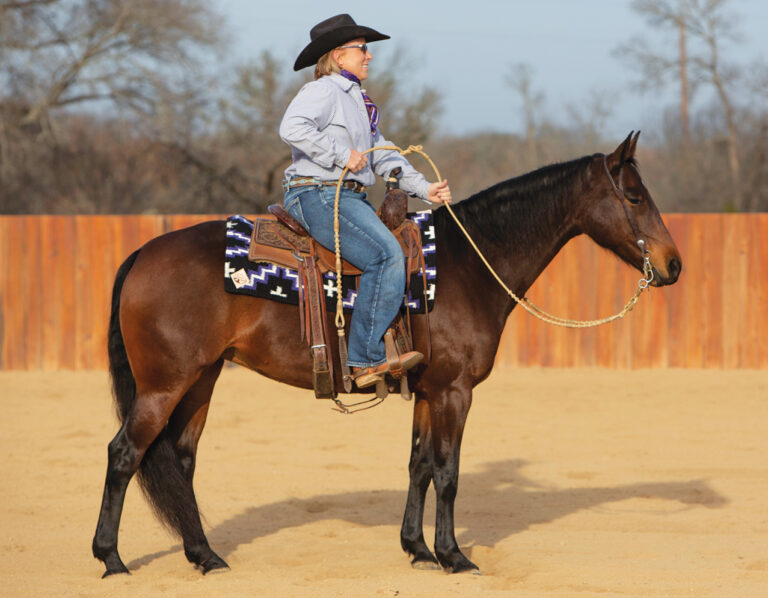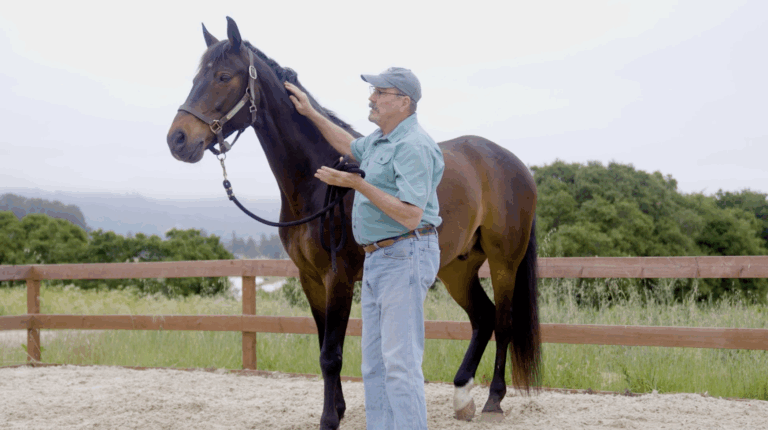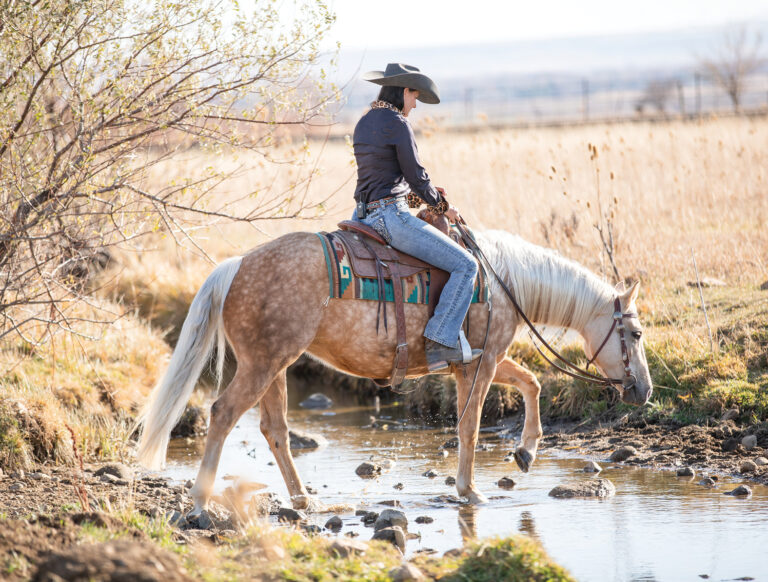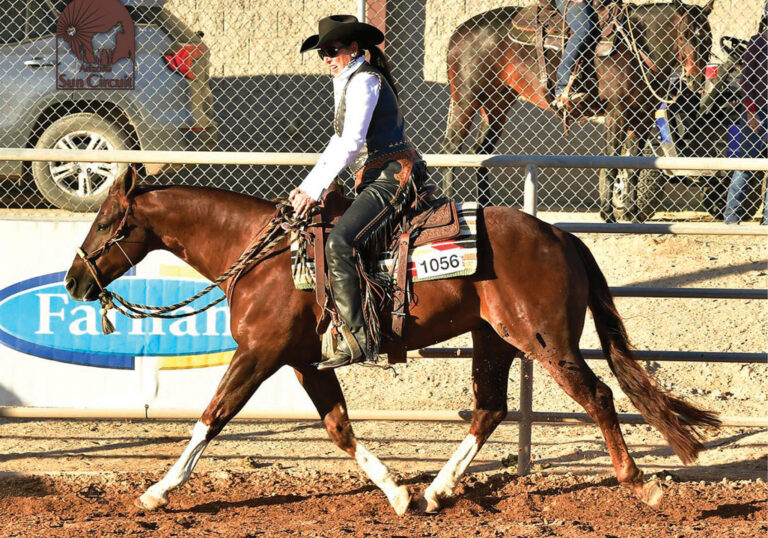One of the first things I like to do with a horse I’m working with is introduce him to leg pressure. It’s an essential tool that I use daily when I’m riding, and before I can go on to more exciting maneuvers like spins or flying lead changes, my horse needs to have a good understanding of what it is.
It’s easy to get into a hurry when teaching your horse fundamental skills like this, and it can often feel repetitive. But when I first introduce my horse to leg pressure and show him to how to move off my leg, I’m not looking for any large movements right away. A step here and a step there is all I need. In fact, if I ask for too much in one session, I risk giving my horse information overload and causing frustration, setting us back even further.

One
When I first start introducing my horse to leg pressure, I use my arena fence to help me. By placing my horse in front of my fence, it naturally blocks her from walking forward and encourages her to move to the side without me having to wrestle with her mouth and frustrate her.
Since the horse I’m riding is a green horse, I ride her two-handed in a snaffle bit to ensure she understands my cues but doesn’t get intimated by my hand pressure in the process.
Two
I put my left leg on my horse’s side and take note on how she responds to the pressure. My spur is only an extension of my leg and shouldn’t be the first thing to touch my horse’s side. If my horse doesn’t respond to my original leg cue, then I’ll go to my spur to encourage movement.
When I asked my horse to move to the side, she moved her hips to the right while keeping her shoulders still. At this point I’m not worried about her fully sidepassing. Because she moved her feet and moved away from the pressure, I’m going to stop and let her know that was the answer I was looking for.

Three
I don’t want to overdo it with my leg and get my horse grumpy with my leg, so I try to be aware of how much leg pressure I’m putting on her. Because she wants to move her hind end when I go to my leg, but not move her front end, I’m going to my hand and encouraging her shoulders to move over a step or two.
Four
The biggest thing to remember is to take your time during a drill like this. After I successfully move my horse’s hips and shoulders to the right a few steps, I’m going to sit and stand to let her soak in all the information I just gave her.

Five
Eventually I move my horse away from the fence to test her skill at moving off my leg into a sidepass without the support of the fence. If she continues to move her hips but not her shoulder, I might support her in my hand a little more to ask her to move to
the right.
Six
If I move away from the fence and ask for the side-pass, and my horse starts to walk forward instead of to the right, I’ll let her get to the fence and then take a couple of good steps to the right before I leave her alone. This helps me avoid wrestling with her mouth and lets her figure out what my leg is asking her to do.




